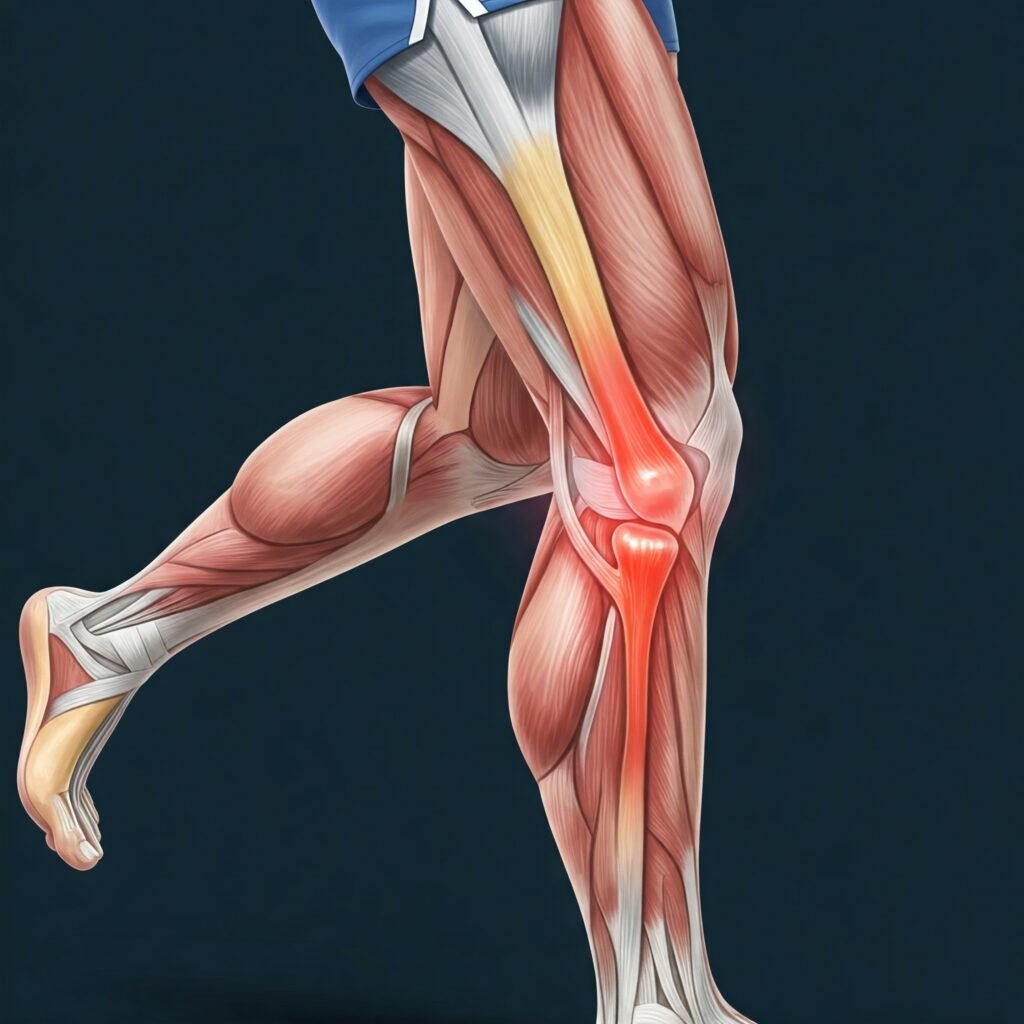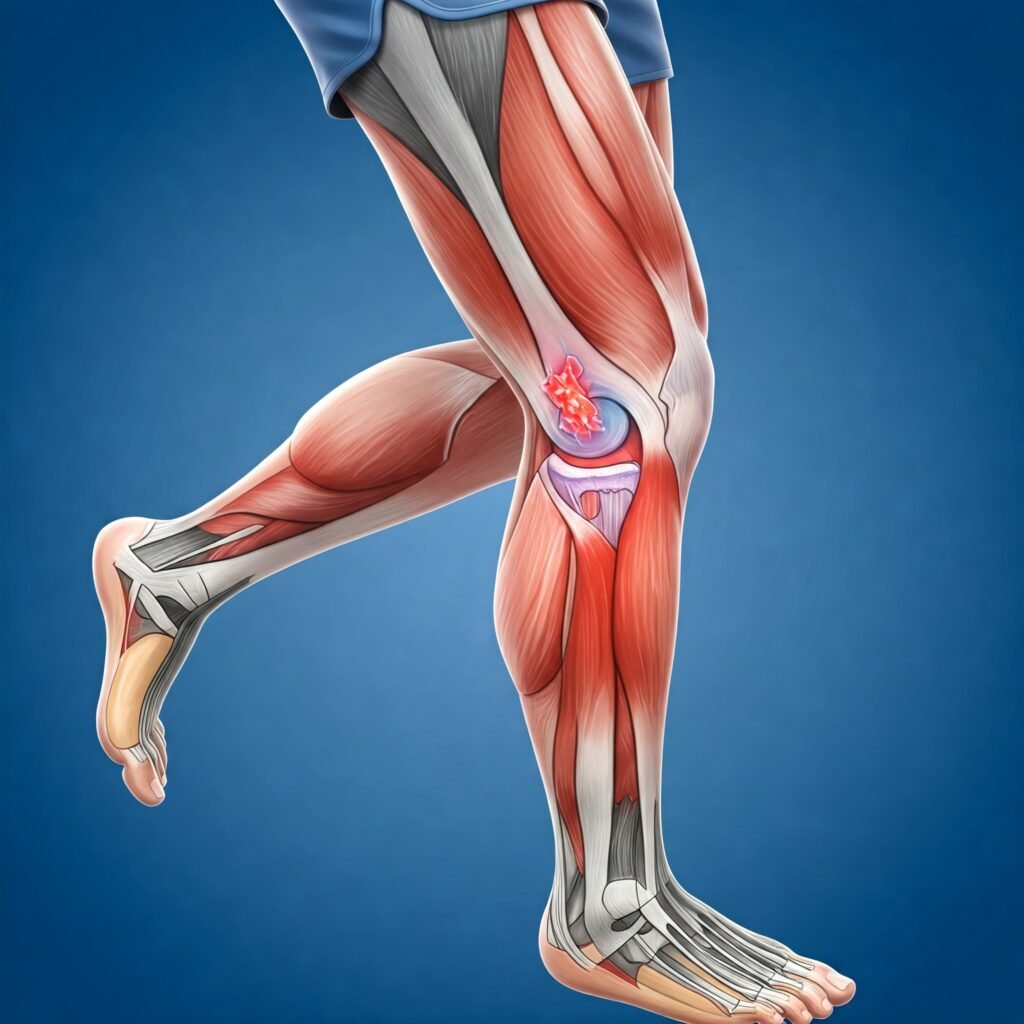Many adults face knee pain due to meniscus tear injury. Meniscuses are the shock-absorbing or cushioning cartilages in the knee that prevent the rubbing of shin bone and thigh bone and also help in weight distribution while moving. In addition to pain, you may also see other symptoms like knee locking, stiffness, and instability. This injury can cause discomfort and pain during exercises by limiting your range of motion.
Such a problem of meniscus tears in runners is quite common. If you have a torn meniscus, then you will be mostly concerned about the following:
- What this means for your regular running
- Will you need surgery
Acute meniscus tears may require surgical intervention, especially if symptoms like joint instability or locking persist. The meniscus is divided into zones based on blood supply: the red zone (outer third) has a rich blood supply, the red-white zone (middle third) has limited blood flow, and the white zone (inner third) has little to no blood supply. Your doctor will recommend surgery or conservative treatment depending on the location and severity of the tear within these zones.
Fortunately, not all meniscus tears require surgery. With proper guidance and support, many minor tears -especially those in vascularized (having blood supply) areas, can heal naturally. If your pain is severe or persistent, consulting a physiotherapist is essential. They can provide expert care to support healing, improve mobility, and guide you through a personalized rehabilitation plan.
Meniscus – What is it and where is it located?
Let us try to explain what the meniscus means. There are two parts of our knee joint:
- Tibial plateau: This is the top of our shin bone
- Femoral condyles: This is the end of our thigh bone.
A smooth or thin cartilage layer known as articular cartilage covers both these parts of the knee joint. On top of this cartilage is the thicker meniscus, a rubber-like substance that can absorb shocks and support knee mobility, providing additional cushioning.
The meniscus also has two parts:
- Lateral meniscus: This circular shape is positioned on the outside of the knee
- Medial meniscus: This C-shaped remains on the inside.
Both parts of the meniscus are wedge-shaped when viewed from the side, with the edges thicker and the center thinner. Only the outer 10-30%, known as the ‘red area,’ has a substantial blood supply. This area is crucial for healing, because it receives the necessary nutrients and oxygen for tissue repair.

The menisci serve several key functions, primarily offering shock absorption and load distribution on the joints while walking and running. They also protect the tibia’s underlying articular cartilage, help lubricate the knee joint, and contribute to proprioception, which helps with balance and stability.
Injury to the meniscus can impair its load-distributing function while running, potentially increasing the risk of further knee problems if not appropriately managed.
How are meniscus tears caused?
Traumatic tears
Meniscus injuries typically result from trauma to the knee, often accompanied by a noticeable ‘ouch’ moment. The meniscus is particularly stressed when twisting and turning while planting a foot. Such injuries are common in sports, including basketball, rugby, football, and netball.
Degenerative tears
The aging process might also result in meniscus tears. The meniscus becomes more weak and less flexible as we age. Alongside other age-related joint changes, such as osteoarthritis, which can cause bony spurs, cartilage degeneration, and damage to the underlying bone surfaces. These tears are classified according to size, location, and pattern. The most frequently afflicted area is the medial meniscus.
What signs and symptoms indicate a torn meniscus?
Common symptoms are joint catch or freeze, locking, or giving way. Depending on the location of the tear, you will always feel discomfort along the joint line. Range of motion may be limited, particularly after periods of inactivity. Symptoms often fluctuate but are usually worsened by twisting and turning movements.
However, not every meniscus injury will result in discomfort or symptoms. In one study, 115 pain-free participants had MRI scans, and 97% showed abnormalities related to the knee, including 31% meniscal tears.

From our experience with runners, we have found that degenerative tears are more likely to develop in those with weak trunk and lower limb strength. Poorly controlled movement patterns or poor running form can also lead to degenerative tears. Insufficient muscle strength around the joint can impair the meniscus’s ability to absorb and distribute load effectively across the joint surfaces. Over time, the condition increases the risk of degenerative tears or exacerbates symptoms if a tear is already present.
How to get back to running after a meniscus tear
A progressive rehabilitation plan is crucial to regaining the strength, endurance, and control required for running. There are many ways to ease knee discomfort and swelling, but the exercises you start with should be appropriate for the state and stage of the knee recovery.
You could worsen your knee by overexerting too early, but complete rest will also not help. The rehabilitation plan should progressively increase in intensity and difficulty until you reach the level required to run safely again.
The first phase of recovery
At this stage, for many runners, the knee may remain swollen and painful, and therefore you must:
- Avoid running or walking so that your knee gets healed. It is suggested that you wear knee braces or use crutches while walking to support the damaged knee.
- Your doctor/physiotherapist may suggest a few easy exercises to reduce the swelling. Such exercises will not cause too much strain on your swollen knee while you exert your muscular strength.
- You can do a few crunch exercises while lying on your back to strengthen your core muscles.
- Easy calf stretches, such as the standing calf stretch, can lessen pain.
- Ice packs will also help to reduce swelling and inflammation.
You can then move on to the next rehabilitation stage after you are able to bend your knee past a straight angle. You must be able to walk short distances around the house without much pain.
The second phase of meniscus tear recovery
In this phase, you gradually increase the load on your meniscus and knee to prepare them for running. You can consult your physio to help you determine when it is safe to progress as you build more control and strength.
The exercises during this phase include:
- Start with knee, ankle, and hip stability exercises (like double-leg squats) and gradually progress to less stable ones (like single-leg squats) that better simulate running.
- Begin with slow, easy-to-control static holds or motions like wall squats, then go to more controlled dynamic exercises like forward lunges.
- As your meniscus tear heals, gradually work your way up to the complete range of motion. Start in the range of motion that you can perform while being pain-free.
- You must gradually increase the force on your knee with light weights, switching from double to single leg support or including dynamic motions.
- Incorporate body balance exercises like single-leg standing to improve posture awareness.
- Include workouts for your core and legs, as well as flexibility workouts to strengthen your body to move easily and sustain the load as you run.
Usually, you can proceed to the last stage of rehabilitation when:
- When you are able to walk quickly for thirty minutes
- When you are able to execute high-load workouts that test your balance and control without experiencing pain or losing control.
Final phase – Return to running
It is important to gradually ease back into running once you are ready to start again. A run-and-walk regimen is helpful because your meniscus might not be strong and flexible enough to support continuous running. Don’t worry about your slow pace at this stage. Be patient and work on improving your knee strength and stability.
A run-and-walk program alternates brief periods of running with walking. The walking intervals allow your meniscus to relax and recover, allowing it to handle another short run. This approach typically allows you to run more during a session compared to attempting continuous running from the start.
As your meniscus strengthens and adapts to running, you can gradually extend the running intervals and decrease the walking intervals until you are able to run continuously without issues.
Generally speaking, it is wise to begin with the following:
- Run on flat and even terrain. Controlled treadmill running can help.
- Use a walk-and-run plan.
- Do only two to three runs per week.
- Have recovery days in between the runs to allow full recovery.
- Before beginning any fast running or hill repeats, increase your endurance for slow running until you can complete your regular running volume at a comfortable pace.
- It is also a good idea to keep up your strength and control exercises, practicing them once or twice a week.
How to prevent meniscus tear while running?
Running exerts significant forces on your legs, and the menisci play a crucial role in absorbing and distributing that force across the knee joints and throughout the body. However, you should not make your menisci bear all that load independently. You have to take assistance from other parts of the body.
Here are some ways to reduce the force and strain on the menisci:
- Don’t ignore full-body strength exercises. You must do it at least twice a week.
- Exercises for balance improve your control over your legs. Supple muscles and joints enhance movement patterns and help the body balance.
- Work on reducing your body weight to lessen the pressure on your joints.
- Combining high-impact (running) and low-impact (cycling or swimming) exercises increases your fitness level while lessening the total force on your knees.
- Getting enough sleep in between workouts helps the body heal.
- Properly fitting and supportive shoes maintain your body’s alignment from the feet up.
- Proper warm-up and cool-down routines help your body get ready and recover.
- Your body can adjust to increased loads with a proper progression plan. Be patient.
After recovering from meniscus tear
Even after the recovery, you must continue with strength and mobility workouts to prevent your meniscus tear from recurring. You will see a good improvement in your running form and performance when you improve the stability and strength of your knees, ankles, and hips.